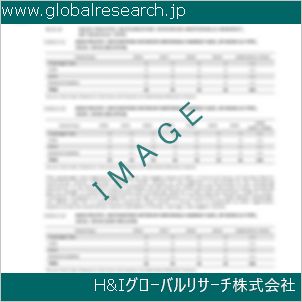Table of Contents
1 Industry Overview of Oxalicacid
1.1 Definition and Specifications of Oxalicacid
1.1.1 Definition of Oxalicacid
1.1.2 Specifications of Oxalicacid
1.2 Classification of Oxalicacid
1.3 Applications of Oxalicacid
1.3.1 Nuclear Application
1.3.2 Non-Nuclear Application
1.4 Industry Chain Structure of Oxalicacid
1.5 Industry Overview and Major Regions Status of Oxalicacid
1.5.1 Industry Overview of Oxalicacid
1.5.2 Global Major Regions Status of Oxalicacid
1.6 Industry Policy Analysis of Oxalicacid
1.7 Industry News Analysis of Oxalicacid
2 Manufacturing Cost Structure Analysis of Oxalicacid
2.1 Raw Material Suppliers and Price Analysis of Oxalicacid
2.2 Equipment Suppliers and Price Analysis of Oxalicacid
2.3 Labor Cost Analysis of Oxalicacid
2.4 Other Costs Analysis of Oxalicacid
2.5 Manufacturing Cost Structure Analysis of Oxalicacid
2.6 Manufacturing Process Analysis of Oxalicacid
3 Technical Data and Manufacturing Plants Analysis of Oxalicacid
3.1 Capacity and Commercial Production Date of Global Oxalicacid Major Manufacturers in 2023
3.2 Manufacturing Plants Distribution of Global Oxalicacid Major Manufacturers in 2023
3.3 R&D Status and Technology Source of Global Oxalicacid Major Manufacturers in 2023
3.4 Raw Materials Sources Analysis of Global Oxalicacid Major Manufacturers in 2023
4 Capacity, Production and Revenue Analysis of Oxalicacid by Regions, Types and Manufacturers
4.1 Global Capacity, Production and Revenue of Oxalicacid by Regions 2019-2024
4.2 Global and Major Regions Capacity, Production, Revenue and Growth Rate of Oxalicacid 2019-2024
4.3 Global Capacity, Production and Revenue of Oxalicacid by Types 2019-2024
4.4 Global Capacity, Production and Revenue of Oxalicacid by Manufacturers 2019-2024
5 Price, Cost, Gross and Gross Margin Analysis of Oxalicacid by Regions, Types and Manufacturers
5.1 Price, Cost, Gross and Gross Margin Analysis of Oxalicacid by Regions 2019-2024
5.2 Price, Cost, Gross and Gross Margin Analysis of Oxalicacid by Types 2019-2024
5.3 Price, Cost, Gross and Gross Margin Analysis of Oxalicacid by Manufacturers 2019-2024
6 Consumption Volume, Consumption Value and Sale Price Analysis of Oxalicacid by Regions, Types and Applications
6.1 Global Consumption Volume and Consumption Value of Oxalicacid by Regions 2019-2024
6.2 Global and Major Regions Consumption Volume, Consumption Value and Growth Rate of Oxalicacid 2019-2024
6.3 Global Consumption Volume and Consumption Value of Oxalicacid by Types 2019-2024
6.4 Global Consumption Volume and Consumption Value of Oxalicacid by Applications 2019-2024
6.5 Sale Price of Oxalicacid by Regions 2019-2024
6.6 Sale Price of Oxalicacid by Types 2019-2024
6.7 Sale Price of Oxalicacid by Applications 2019-2024
6.8 Market Share Analysis of Oxalicacid by Different Sale Price Levels
7 Supply, Import, Export and Consumption Analysis of Oxalicacid
7.1 Supply, Consumption and Gap of Oxalicacid 2019-2024
7.2 Global Capacity, Production, Price, Cost, Revenue, Supply, Import, Export and Consumption of Oxalicacid 2019-2024
7.3 USA Capacity, Production, Price, Cost, Revenue, Supply, Import, Export and Consumption of Oxalicacid 2019-2024
7.4 EU Capacity, Production, Price, Cost, Revenue, Supply, Import, Export and Consumption of Oxalicacid 2019-2024
7.5 China Capacity, Production, Price, Cost, Revenue, Supply, Import, Export and Consumption of Oxalicacid 2019-2024
7.6 Japan Capacity, Production, Price, Cost, Revenue, Supply, Import, Export and Consumption of Oxalicacid 2019-2024
8 Major Manufacturers Analysis of Oxalicacid
8.1 Manufacturer One
8.1.1 Company Profile
8.1.2 Product Picture and Specifications
8.1.2.1 Type I
8.1.2.2 Type II
8.1.2.3 Type III
8.1.3 Capacity, Production, Price, Cost, Gross and Revenue
8.1.4 Contact Information
8.2 Manufacturer Two
8.2.1 Company Profile
8.2.2 Product Picture and Specifications
8.2.2.1 Type I
8.2.2.2 Type II
8.2.2.3 Type III
8.2.3 Capacity, Production, Price, Cost, Gross and Revenue
8.2.4 Contact Information
8.3 Manufacturer Three
8.3.1 Company Profile
8.3.2 Product Picture and Specifications
8.3.2.1 Type I
8.3.2.2 Type II
8.3.2.3 Type III
8.3.3 Capacity, Production, Price, Cost, Gross and Revenue
8.3.4 Contact Information
8.4 Manufacturer Four
8.4.1 Company Profile
8.4.2 Product Picture and Specifications
8.4.2.1 Type I
8.4.2.2 Type II
8.4.2.3 Type III
8.4.3 Capacity, Production, Price, Cost, Gross and Revenue
8.4.4 Contact Information
8.5 Manufacturer Five
8.5.1 Company Profile
8.5.2 Product Picture and Specifications
8.5.2.1 Type I
8.5.2.2 Type II
8.5.2.3 Type III
8.5.3 Capacity, Production, Price, Cost, Gross and Revenue
8.5.4 Contact Information
…
9 Marketing Trader or Distributor Analysis of Oxalicacid
9.1 Marketing Channels Status of Oxalicacid
9.2 Traders or Distributors with Contact Information of Oxalicacid by Regions
9.3 Ex-work Price, Channel Price and End Buyer Price Analysis of Oxalicacid
9.4 Regional Import, Export and Trade Analysis of Oxalicacid
10 Industry Chain Analysis of Oxalicacid
10.1 Upstream Major Raw Materials Suppliers Analysis of Oxalicacid
10.1.1 Major Raw Materials Suppliers with Contact Information Analysis of Oxalicacid
10.1.2 Major Raw Materials Suppliers with Supply Volume Analysis of Oxalicacid by Regions
10.2 Upstream Major Equipment Suppliers Analysis of Oxalicacid
10.2.1 Major Equipment Suppliers with Contact Information Analysis of Oxalicacid
10.2.2 Major Equipment Suppliers with Product Pictures Analysis of Oxalicacid by Regions
10.3 Downstream Major Consumers Analysis of Oxalicacid
10.3.1 Major Consumers with Contact Information Analysis of Oxalicacid
10.3.2 Major Consumers with Consumption Volume Analysis of Oxalicacid by Regions
10.4 Supply Chain Relationship Analysis of Oxalicacid
11 Development Trend of Analysis of Oxalicacid
11.1 Capacity, Production and Revenue Forecast of Oxalicacid by Regions and Types
11.1.1 Global Capacity, Production and Revenue of Oxalicacid by Regions 2024-2029
11.1.2 Global and Major Regions Capacity, Production, Revenue and Growth Rate of Oxalicacid 2024-2029
11.1.3 Global Capacity, Production and Revenue of Oxalicacid by Types 2024-2029
11.2 Consumption Volume and Consumption Value Forecast of Oxalicacid by Regions, Types and Applications
11.2.1 Global Consumption Volume and Consumption Value of Oxalicacid by Regions 2024-2029
11.2.2 Global and Major Regions Consumption Volume, Consumption Value and Growth Rate of Oxalicacid 2024-2029
11.2.3 Global Consumption Volume and Consumption Value of Oxalicacid by Types 2024-2029
11.2.4 Global Consumption Volume and Consumption Value of Oxalicacid by Applications 2024-2029
11.3 Supply, Import, Export and Consumption Forecast of Oxalicacid
11.3.1 Supply, Consumption and Gap of Oxalicacid 2024-2029
11.3.2 Global Capacity, Production, Price, Cost, Revenue, Supply, Import, Export and Consumption of Oxalicacid 2024-2029
11.3.3 USA Capacity, Production, Price, Cost, Revenue, Supply, Import, Export and Consumption of Oxalicacid 2024-2029
11.3.4 EU Capacity, Production, Price, Cost, Revenue, Supply, Import, Export and Consumption of Oxalicacid 2024-2029
11.3.5 China Capacity, Production, Price, Cost, Revenue, Supply, Import, Export and Consumption of Oxalicacid 2024-2029
11.3.6 Japan Capacity, Production, Price, Cost, Revenue, Supply, Import, Export and Consumption of Oxalicacid 2024-2029
12 New Project Investment Feasibility Analysis of Oxalicacid
12.1 New Project SWOT Analysis of Oxalicacid
12.2 New Project Investment Feasibility Analysis of Oxalicacid
13 Conclusion of the Global Oxalicacid (CAS 144-62-7) Industry 2024 Market Research Report
| ※参考情報 シユウ酸(Oxalic acid、CAS番号144-62-7)は、化学式C2H2O4を持つ有機化合物で、二価のカルボン酸に分類されます。シユウ酸は、無色結晶または白色の粉末として存在し、水に非常に溶けやすい性質を持っています。自然界では、特にほうれん草、ルバーブ、ココアなどの植物において見られる成分であり、これらの食品においては酸味を引き立てる役割を果たしています。 シユウ酸の特徴として、まずその化学的性質が挙げられます。二つのカルボキシル基(-COOH)を含むため、非常に強い酸性を示します。この特性により、さまざまな化学反応において酸として働くことができます。また、シユウ酸は還元剤としても機能するため、特定の化学合成や分析手法で利用されることがあります。 種類としては、シユウ酸は通常、結晶性の固体として存在しますが、工業的にはその塩やエステルも重要な形態とされています。シユウ酸の塩の一例として、カルシウムシユウ酸塩(CaC2O4)があり、これは腎結石の主要成分として知られています。エステルとしては、シユウ酸ジエチル(Diethyl oxalate)などがあり、化学合成の中間体として重要です。 シユウ酸の用途は多岐にわたります。まず、工業的には、金属の洗浄や除錆剤として広く用いられています。シユウ酸は金属イオンと反応し、可溶性のキレートを形成するため、特に鉄や銅の除去に効果的です。また、染料やインクの製造においても利用されることがあり、その酸性特性は特定の化合物の合成に役立ちます。 さらに、シユウ酸は食品添加物としても使用されますが、濃度には注意が必要です。高用量で摂取することは体に害を及ぼす可能性があるため、摂取量を管理することが重要です。腎臓においては、シユウ酸はカルシウムと結合してカルシウムシユウ酸塩を形成し、これが腎結石を引き起こす要因となります。このため、シユウ酸を含む食品を過剰に摂取する際は注意が必要です。また、シユウ酸は一定の条件下で有毒であるため、取り扱いには注意が必要です。 シユウ酸に関連する技術には、主にその工業的利用に関するものが多くあります。例えば、シユウ酸を用いた金属の処理技術や、化学合成においてシユウ酸を出発材料とする新しい化合物の合成に関する研究が進められています。また、シユウ酸の環境への影響を考慮した、廃水処理技術における利用なども進行中です。 一方、シユウ酸は農業においても利用されることがあります。土壌のpHを調整するための資材としての利用や、特定の土壌条件下での植物の成長促進に寄与することが報告されています。これらの研究は、持続可能な農業の実現に向けた重要な取り組みとなっています。 このように、シユウ酸は多くの産業や分野で利用される重要な化合物であり、その特性や用途についての理解は、科学技術の発展や安全な利用につながると考えられます。今後も、新しいシユウ酸の利用法やその関連技術についての研究が進むことで、環境や健康に配慮した形での活用が期待されるでしょう。 |
❖ 免責事項 ❖
http://www.globalresearch.jp/disclaimer












